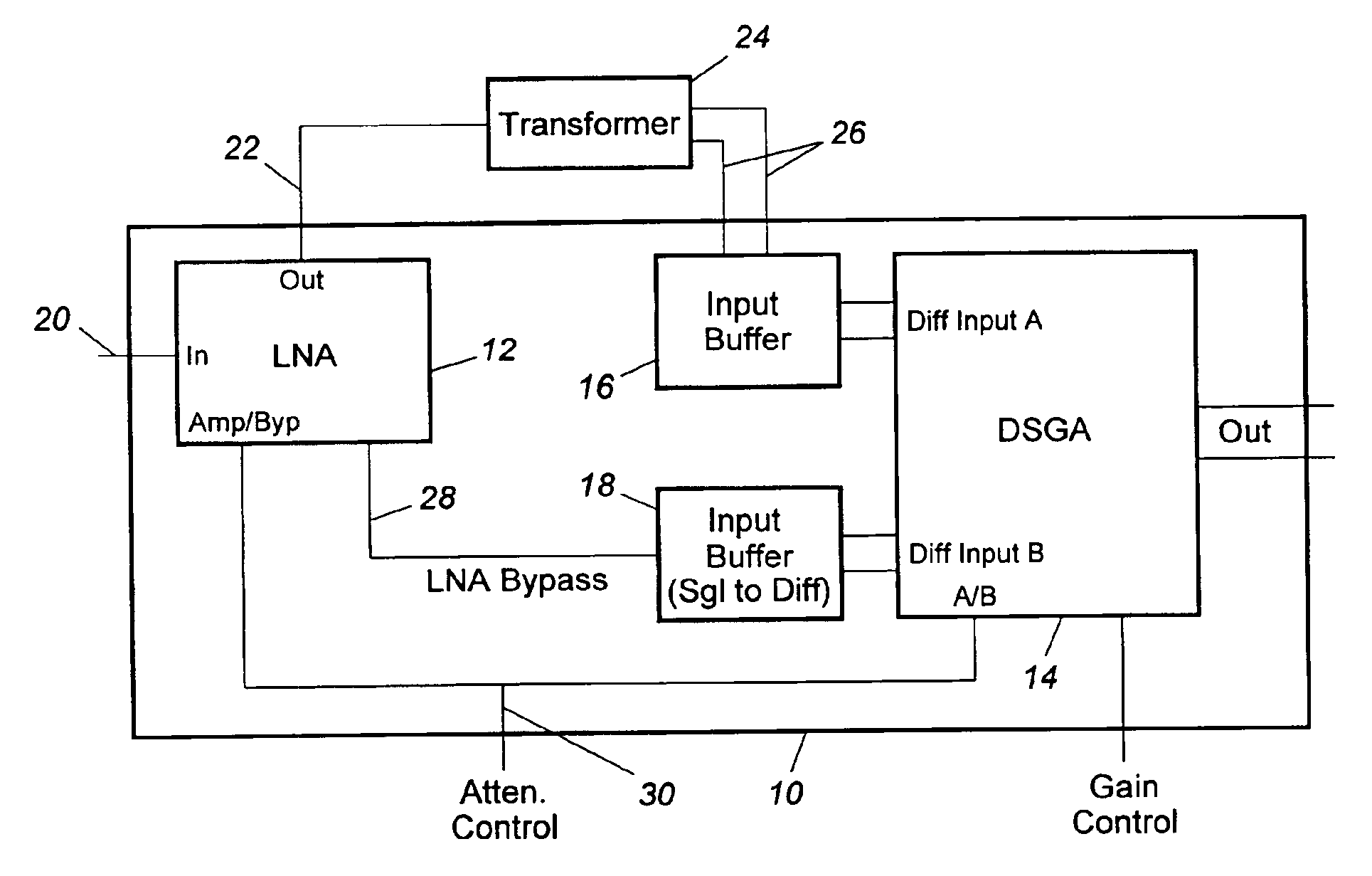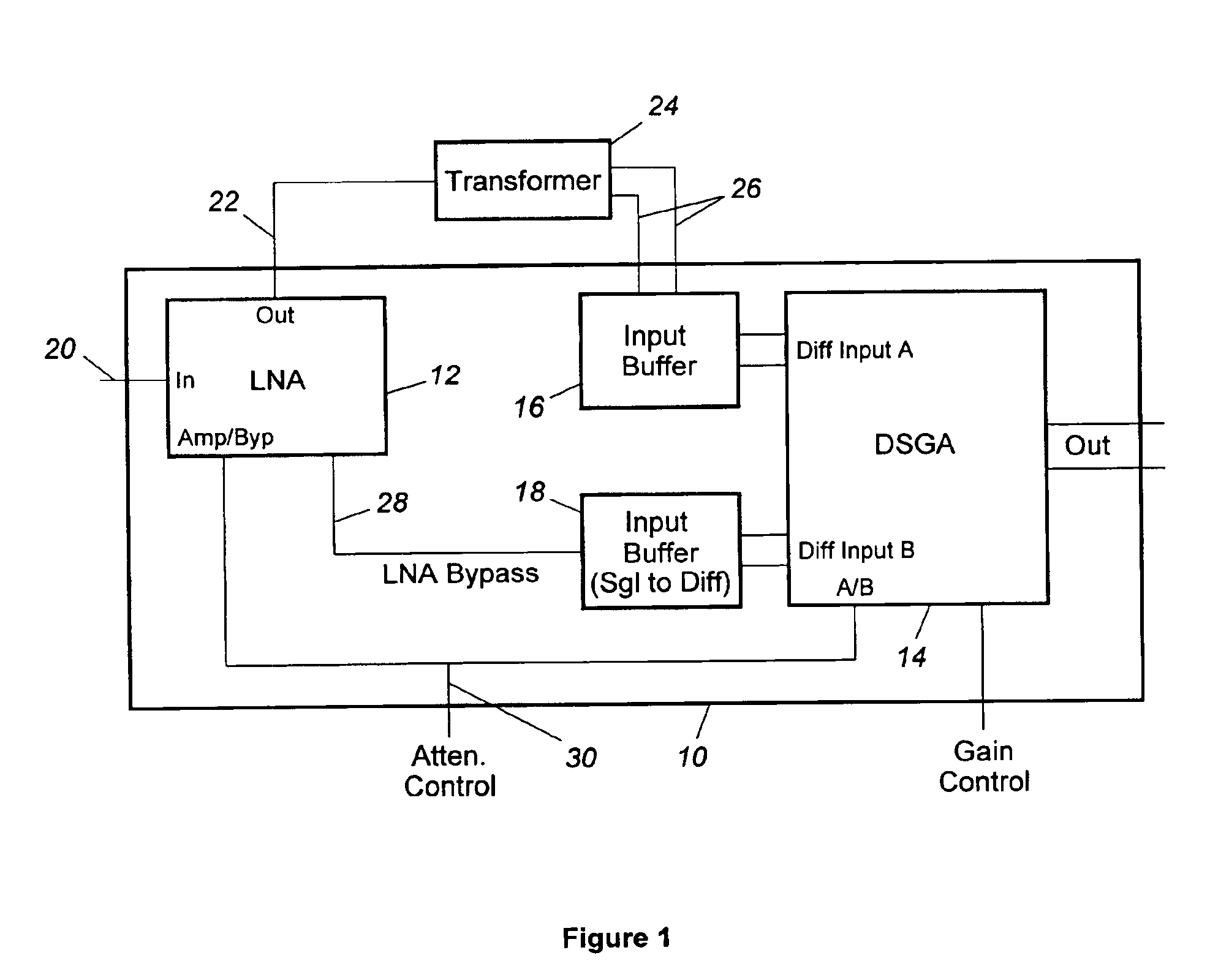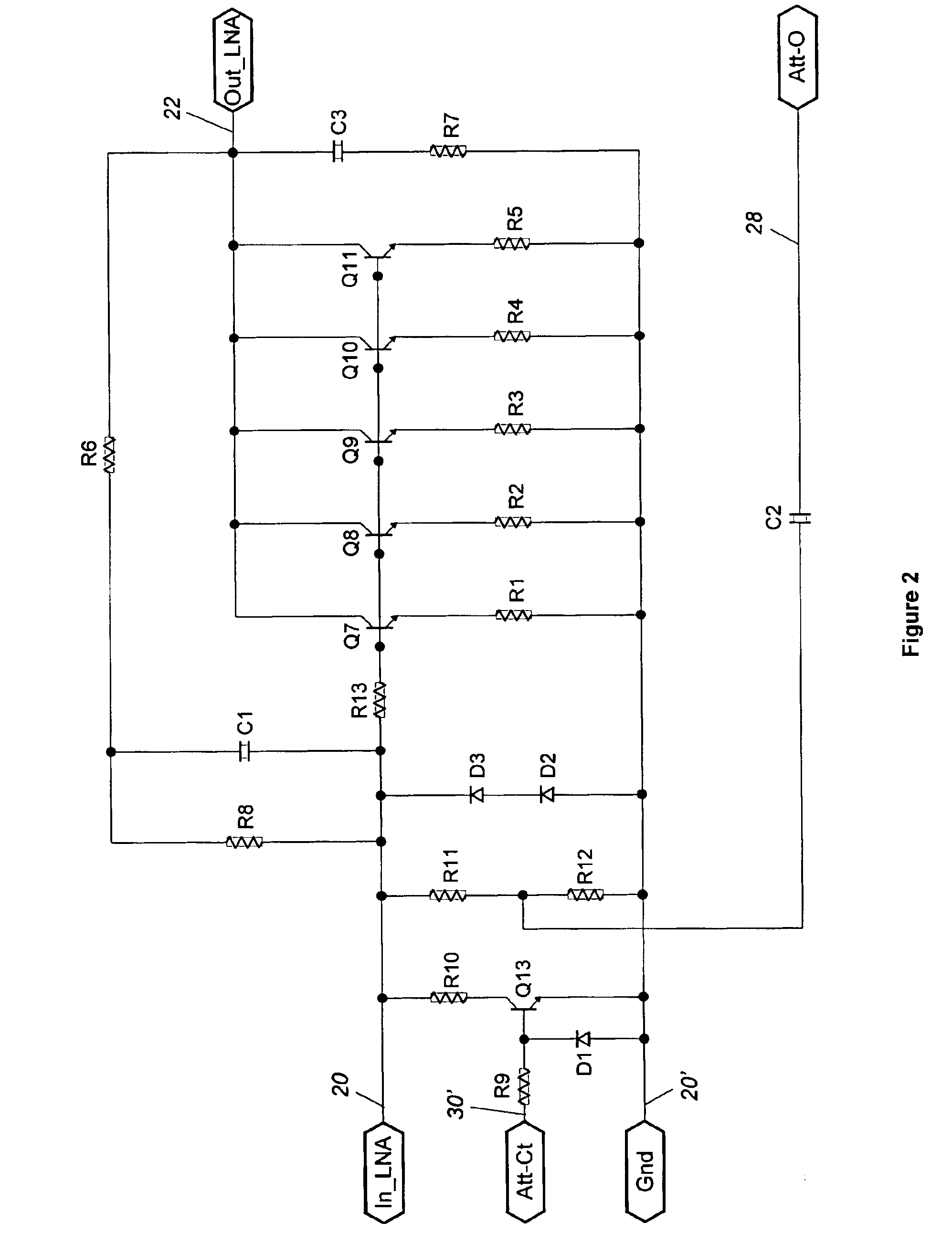Low noise amplifier with fixed loss bypass
a low-noise, bypass technology, applied in the direction of low-noise amplifiers, gated amplifiers, amplifiers with min 3 electrodes or 2 pn junctions, etc., to avoid the use of costly off-chip components
- Summary
- Abstract
- Description
- Claims
- Application Information
AI Technical Summary
Benefits of technology
Problems solved by technology
Method used
Image
Examples
Embodiment Construction
As shown in the drawings for purposes of illustration, the present invention pertains to low noise radio-frequency (RF) amplifiers having a switched attenuator function. In the block diagram of FIG. 1, the amplifier of the invention, which is typically used in the “front end” of an RF receiver, is implemented as an integrated circuit (IC), indicated generally by reference numeral 10. The IC amplifier 10 contains a single ended low noise amplifier (LNA) 12 followed by a differential switched gain amplifier (DSGA) 14, which has two input buffers 16 and 18, the input buffer 18 including a single-ended to differential conversion.
The LNA 10 has an input signal line 20 and a normal output signal line 22, which is coupled to a single-ended signal to differential signal transformer 24, shown as being located outside the IC amplifier 10, although it may also be located on chip in some designs. Differential signals from the transformer 24 are connected by lines 26 to input buffer 16, which is...
PUM
 Login to View More
Login to View More Abstract
Description
Claims
Application Information
 Login to View More
Login to View More - R&D
- Intellectual Property
- Life Sciences
- Materials
- Tech Scout
- Unparalleled Data Quality
- Higher Quality Content
- 60% Fewer Hallucinations
Browse by: Latest US Patents, China's latest patents, Technical Efficacy Thesaurus, Application Domain, Technology Topic, Popular Technical Reports.
© 2025 PatSnap. All rights reserved.Legal|Privacy policy|Modern Slavery Act Transparency Statement|Sitemap|About US| Contact US: help@patsnap.com



